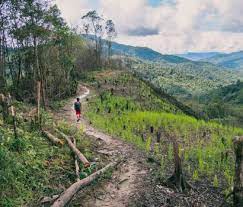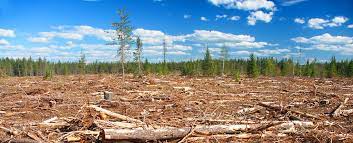Natural environment is of crucial importance for social and economic life. In this respect, the diversity of nature not only offers man a vast power of choice for his current needs and desires, it also enhances the role of nature as a source of solutions for the future needs and challenges of mankind.
Today, however, human pressure on natural environment is greater than before in terms of magnitude and efficiency in disrupting nature and natural landscapes.
Ecosystems, Habitats and Species
Most notably impact includes:
Intensive agriculture which replaces traditional farming. This, combined with the subsidies of industrial farming has had an enormous effect on rural landscapes and continues to be a threat.
Mass tourism affecting mountains and coasts. The policies pursued in the industry, transport and energy sectors have a direct and damaging impact on the coasts, major rivers (dam construction and associated canal building) and mountain landscapes (main road networks).
The strong focus of forestry management on economic targets primarily causes the decline in biodiversity, soil erosion and other related effects.
The clearest manifestations of the degradation of the natural environment are:
Reduction and fragmentation of habitats and landscapes in expansion of human activities into the natural environment, manifested by urbanisation, recreation, industrialization, and agriculture, result in increasing uniformity in landscapes and consequential reduction, disappearance, fragmentation or isolation of habitats and landscapes.
The consequences are decreased species diversity, due to reduced habitable surface area which corresponds to a reduced species carrying capacity.

The reduction of the size of habitats also reduces the genetic diversity of the species living there. Smaller habitats can only accommodate smaller populations, as a result, there is an impoverished gene pool.
Read Also : Methods of Disposal of Waste Pesticide Containers
The reduction of genetic resources of a species diminishes its flexibility and evolutionary adaptability to changing situations. This has significant negative impacts on its survival.
The conditions under which the reduction of habitats often occur prevent living organisms from making use of their normal ways to flee their threatened habitat.
Those escape routes include migration to other habitats, adaptation to the changing environment or genetic interchange with populations in nearby habitats.
Of particular concern is the abrupt nature of human intervention; human projects are planned and implemented on a much shorter time scale than natural processes.
Furthermore human intervention, such as the construction of buildings, motorways or railways results in the fragmentation of habitats, which strongly limits the possibility for contact or migration among them.
In extreme cases even the smallest, narrowest connections between habitats are broken off. Such isolation is catastrophic for life in the habitat fragments.
Loss of species of Fauna and Flora. The biodiversity is affected by decreasing species numbers and the loss of habitats in many regions. Approximately 30 % of the vertebrates and 20 % of the higher plants are classified as “threatened”.
Threats are directly linked to the loss of habitats due to destruction, modification and fragmentation of ecosystems as well as from overuse of pesticides and herbicides, intensive farming methods, hunting and general human disturbance.
Agriculture
As a result of needs for food production since the 1940s, policies have encouraged increased production through a variety of mechanisms, including price support, other subsidies and support for research and development.
The success achieved in agricultural production has however entailed increased impact on the environment.
Modern agriculture is responsible for the loss of much wildlife and their habitats, through reduction and fragmentation of habitats and wildlife populations.
The drainage of wetlands, the destruction of hedgerows and the intensive use of fertilizers and pesticides can all pose a threat to wildlife. Highly specialized monoculture is causing significant loss in species abundance and diversity.
On the other hand increased production per hectare in intensive areas, raising of livestock volume, and lower prices for agricultural products have also caused marginalization of agricultural land, changing the diversity of landscapes into the direction of intensive agriculture and abandoned land.
Energy
All energy types have potential impacts on the natural environment to varying degrees at all stages of use, from extraction through processing to end use.
Read Also : Components of the Natural Environment
Generating energy from any source involves making the choices between impacts and how far those impacts can be tolerated at the local and global scale.
This is especially of importance for nuclear power, where there are significant risks of radioactive pollution as observed.

